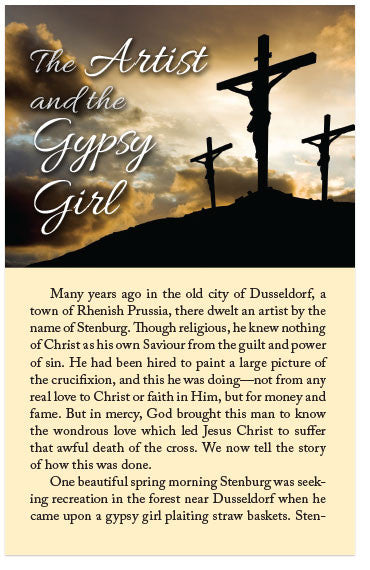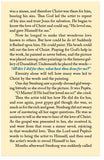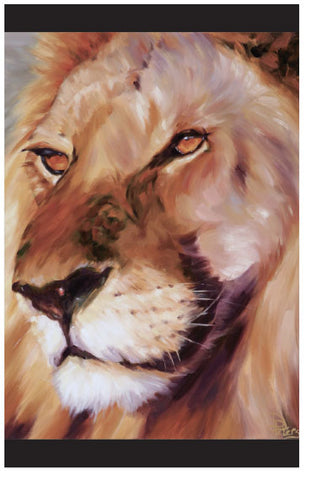The Artist and the Gypsy Girl (KJV)
Special-Order Folded Tract
 NOTE: This item is custom-printed to order (click for more details).
NOTE: This item is custom-printed to order (click for more details).
This tract is from our print-on-demand library, and is not kept in stock. Select the options below, and we will custom-print a batch just for you. Because this item is custom-printed, you can add your custom imprint to the back page at no extra cost.
- Estimated shipping date: Thursday, January 1 (Click for more details)
- SKU:
- Discounts: Discount coupons do not apply to this item
- Format: Folded Tract
- Size: 3.5 inches x 5.5 inches
- Pages: 6
- Imprinting: Available with 5 lines of custom text
- Version: KJV
- Returns: Because this item is custom-printed to order, it cannot be returned.
Show all item details
The full text of this tract is shown below in the KJV version. (Do you want to print this tract in a different version than the one listed? Contact us and let us know what you're looking for—we may be able to create the alternate version for you at no charge.)
Many years ago in the old city of Dusseldorf, a town of Rhenish Prussia, there dwelt an artist by the name of Stenburg. Though religious, he knew nothing of Christ as his own Saviour from the guilt and power of sin. He had been hired to paint a large picture of the crucifixion, and this he was doing—not from any real love to Christ or faith in Him, but for money and fame. But in mercy, God brought this man to know the wondrous love which led Jesus Christ to suffer that awful death of the cross. We now tell the story of how this was done.
One beautiful spring morning Stenburg was seeking recreation in the forest near Dusseldorf when he came upon a gypsy girl plaiting straw baskets. Stenburg was so impressed by her striking beauty that he decided to hire her as a model for a picture of a Spanish dancing girl. He arranged with Pepita, for that was her name, to come three times a week to his studio to pose as a model.
She arrived on time, and as her large eyes roved around the studio looking at the paintings, she was full of wonder. The large one (the crucifixion) caught her eye. Gazing at it intently, she asked in an awed voice, pointing to the figure in the center, “Who is that?”
“The Christ,” answered Stenburg carelessly.
“What is being done to Him?”
“They are crucifying Him.”
“Who are those around Him with the bad faces?”
“Now, look here,” said the artist, “I cannot talk while I work. Just stand as I tell you.” The girl dared not speak again, but she continued to gaze and wonder.
Every time she came to the studio, the fascination of the painting grew upon her. Again she ventured to ask a question, for she longed to learn more of its meaning.
“Why did they crucify Him? Was He bad, very bad?”
“No, very good.”
That was all she learned that day, but it added a little to her knowledge of that wonderful scene.
At last, seeing she was so anxious to know the meaning of the picture, one day Stenburg said, “Listen: I will tell you once for all, and then ask no more questions.” Then he told the story of the cross, which was new to Pepita, though so old to the artist that it ceased to touch him. He could paint that dying agony, and not a nerve of his would quiver but the thought of it wrung her heart. Tears filled her eyes and she could hardly control her emotion.
Pepita’s last visit to the studio had come. She stood before the great picture, reluctant to leave it. “Come,” said the artist, “here is your money, and a gold piece over.”
“Thanks, Master.” Then turning to the picture, said: “You must love Him very much since He has done all that for you; do you not?”
Stenburg could not answer. Pepita with a sad heart went back to her people. But her words pierced Stenburg like an arrow. God’s Spirit sent the gypsy girl’s words home to his heart. He could not forget them. “All that for you,” rang in his ears. He became restless and sad. He knew he did not love the crucified One, and mere religion gave no rest to his troubled heart, nor brought him to know the peace of God.
Some time after this Stenburg was led to follow a few poor people who gathered in a secluded place to hear the Bible read and the gospel preached. There for the first time he met those who had a living faith, and he heard the simple gospel. He was made to realize why Christ hung upon the cross for sinners; that he was a sinner, and therefore Christ was there for him, bearing his sins. Thus God led the artist to repent of his sins and trust Jesus for salvation. He began to know the love of Christ and could say, “He loved me, and gave Himself for me.”
Now he longed to make that wondrous love known to others. But how could he do it? Suddenly it flashed upon him. He could paint. His brush could tell out the love of Christ. Praying for God’s help in the work, he painted as never before, and the picture was placed among other paintings in the famous gallery of Dusseldorf. Underneath he placed the words—
“All this I did for thee; what hast thou done for me?”
Eternity alone will tell how many were led to Christ by the words and the painting.
One day Stenburg saw a poorly-dressed girl weeping bitterly as she stood by the picture. It was Pepita.
“O Master! If He had but loved me so!” she cried.
Then the artist told her how He did die for her, and rose again, poor gypsy girl though she was, as much as for the rich and great. Stenburg did not weary now of answering all her eager questions. He was as anxious to tell as she was to hear of the love of Christ. As the gospel was presented to her, she received it, and went from that room a sinner saved, rejoicing in that wonderful love. Thus the Lord used Pepita’s words to bring the artist to Himself, and then used the artist’s words to reveal Himself to her.
Months afterward Stenburg was suddenly called one night by a stranger to visit a dying person. Following his guide through the streets into the country and then beyond into the deep forest, at last they came to a few poor tents in a sheltered spot. In one of these he found Pepita dying in poverty, but happy in the precious love of Christ. He saw her die praising her Saviour for His love, knowing that He had taken all her sins away and that she was going into His blessed presence to be forever with Him.
Long after this, when the artist, too, had gone to be with the Lord, a wealthy young nobleman found his way into the picture gallery, and as he gazed upon the painting and words underneath it, God there and then spoke to his heart. It was Count Zinzendorf, who from that day became an earnest Christian, and also became the father of the Moravian missions by means of which God led thousands of souls to Himself. Such are the wonderful ways of God!
I gave My life for thee,
My precious blood I shed,
That thou might’st ransomed be,
And quickened from the dead;
I gave My life for thee,
What hast thou given for ME?
I suffered much for thee,
More than thy heart can know,
Of bitterest agony,
To rescue thee from woe;
I’ve borne it all for thee,
What hast thou borne for ME?
And I have brought to thee,
Down from My home above,
Salvation full and free,
My pardon and My love;
Great gifts I brought to thee,
What hast thou done for ME?
—F.R.H
“For God so loved the world, that He gave His only begotten Son, that whosoever believeth in Him should not perish, but have everlasting life.” (John 3:16)
“And that he died for all, that they which live should not henceforth live unto themselves, but unto him which died for them, and rose again.” (2 Corinthians 5:15)












